Title: DNA Design
Description: I built a machine to help me slit-scan my most important personality traits.
Banner
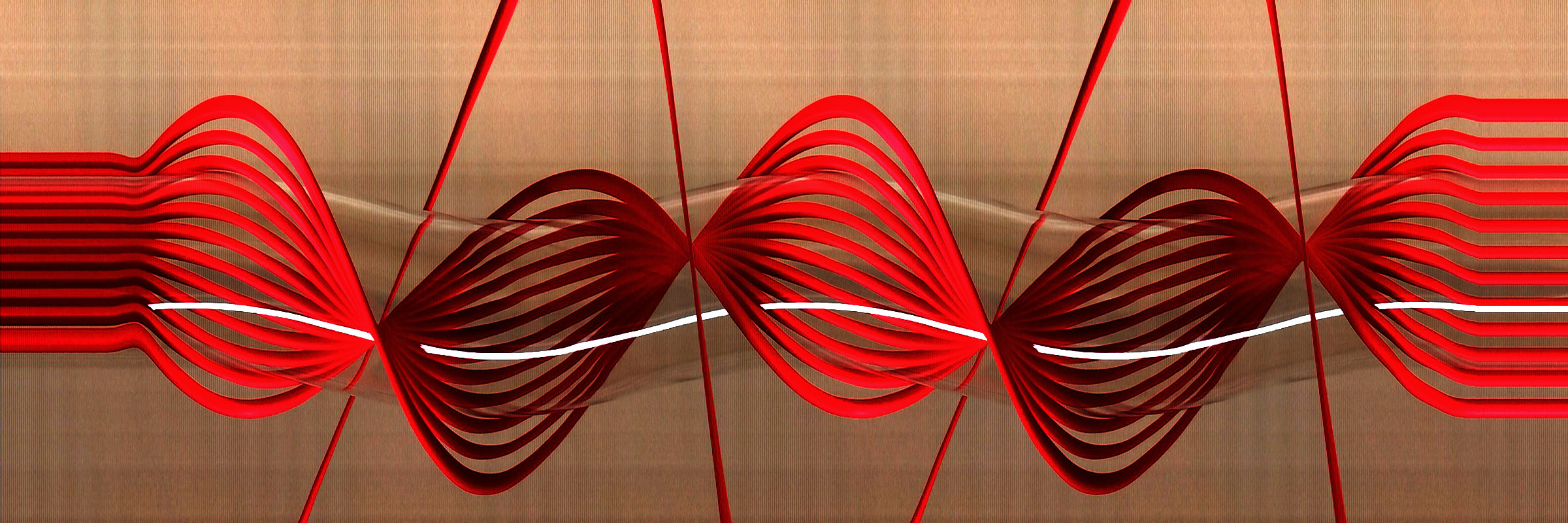
60-461/761: Experimental Capture
CMU School of Art / IDeATe, Spring 2020 • Profs. Golan Levin & Nica Ross
Title: DNA Design
Description: I built a machine to help me slit-scan my most important personality traits.
Banner

For my final project, I aimed to experiment in slit-scanning. At first I was planning to use it to make a portrait series of my friend Julie and her extravagant clothes, but since the virus stopped us from seeing each other, I decided to make a self portrait series instead. As I experimented with my rotation mechanism (see details below), I realized my images resemble the helical shape of DNA. Combining the two ideas, if I had the ability to design my DNA, these images depict what I would want the sequences of my most important traits to look like.
RESOURCEFULNESS, DRIVE
This is a roll of Scotch tape, and this image is the epitome of this project — it illustrates my ability to accomplish my goal for this project despite the awful situation we’re in. As I have explained below, I created an entirely automatic rotation machine out of Arduino materials I happened to have in my closet, cardboard from all the boxes of groceries we’ve ordered, a Lazy Susan from my spice cabinet, corks from wine bottles, Scotch tape and a lot else, in order to pursue my visions for this project. I’ve always been this way: whenever there’s a problem, I set out to fix it in any way.
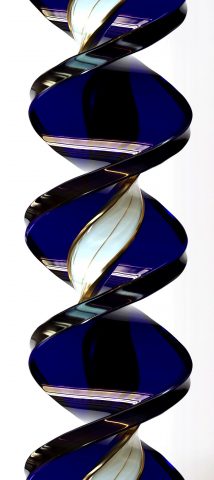 CURIOSITY, SPIRITUALITY
CURIOSITY, SPIRITUALITY
This is a glass clock. I grew up interested in a myriad of subjects, and one of my all time favorite fascinations is theoretical physics and the concept of dimensions and spacetime. I was recently writing a final paper for another class about the fourth dimension, and when she was in the room I asked my mom if she though time was another dimension. It led to an incredibly passionate conversation about our philosophies of life, religion, and spirituality, which I have only recently begun to understand for myself, and I connected with her an an entirely different level. The mixing of time and space is an idea that fascinates my entire family, and is becoming one of the main explorations in my art practice.
EMPATHY
These are cooking utensils, which represent, more literally, my family’s love for food, but also my devotion to love in general, which I learned from food. Every evening growing up, my family would sit down to a home-cooked dinner together, dropping our electronics, homework, or whatever else we were working on, and come together to eat and discuss our days and anything exciting (or depressing) that was going on in the world. Even if I didn’t know it until recently, this has been one of the most defining aspects of my life. Dinner is where I learned how to be polite and listen, make eloquent conversation, and understand and appreciate love. I am so grateful that this is how my family brought me up, and I plan to do the same with my own children someday.
CONFIDENCE
This is my wide-tooth hair comb, designed specifically for curly hair. Over the last few years, I’ve come to love my curly hair — and I used to really hate it. At the same time, my love for other aspects of myself, my abilities, and my decisions has also increased. I find that since coming to college and being even more independent than I was before it, I’m becoming more and more fearless. I know what I want, and I’m not afraid to ask for it. I think my hair was the key to my internal freedom.
MELOMANIAC
This one is a combination of music materials, including headphones, a guitar pick, and a mini amp. This aspect of me isn’t very deep — I just love music. I listen to and play it all the time. Plus it especially connects me to my dad.
Rotation Mechanism
Unfortunately, one of the bigger goals of this project, creating 3D models with photogrammetry, I was not able to achieve. I wanted to take slit-scans of the objects like I did above, but from multiple angles, to see if I could stitch them together in three dimensions. I’m not sure if my computer isn’t strong enough to see any depth (my computer crashed every 4 out of 5 tries) or this is just completely impossible to do, but after many many attempts, it never worked properly. However, two good things came out of my attempts. First, some cool GIFs of what the 3D models could potentially look like:


Second, what I predicted would be tricky about doing photogrammetry with these rotating images is that the rotation speed, starting position, and ending position all have to be constant or else the photos won’t look like they’re from the same “object” and the photogrammetry software won’t find any similar landmarks. I had to find a way to automate the process.
When I first started, I was looking for something in my house that spun smoothly. I found a little Lazy Susan in my spice cabinet and attached a string to the side, which I pulled to make it rotate. This was effective for a minute, but I quickly realized it’s impossible for a human to pull the string with a constant force, so the coils in my images would never be perfect without a machine. I needed to motorize the Lazy Susan.
Luckily, I had a bunch of Arduino pieces and cardboard lying around, so I sought out to do just that. It look a while; there was a lot of trial and error. Here’s a bit of documentation from the process.
Details

And it was successful! All the five images in the DNA series were made with my machine instead of by hand, making my image-making process super easy. I could focus a lot more on the composition of my rotating sculptures instead of futzing with the Lazy Susan. And if my laptop ever works, it would definitely be an effective device to do slit-scanning photogrammetry.
Some updates:
For the past week I have been working on automating my slit scanning turntable with Arduino. Lots of cardboard and wires going on. It’s ending up being a bit more complicated than I thought, as I cannot fabricate an attachment exactly fitted to the motor without a 3D printer, so right now the problem is that my machine is a bit wobbly and doesn’t have a lot of torque. I’m hoping to get this down in the next day or so.
I tried to get my DSLR to work with a Processing sketch, but I learned my phone actually has a better level of video resolution, so I am dropping that plan.
Unfortunately I have very little memory left on my iPhone at the moment, so I wanted to transfer some of my data onto an external hard drive through my laptop. However, it seems that my Apple drivers or USB cables aren’t working, so I have been tirelessly trying for the last few days to fix that.
I am currently working on a photogrammetry test. I also have a potential candidate photo for my final series.
See everything below.

This is an image of kitchen utensils. One of the most important aspects of my life is family, and one of the foundational aspects of my family is dinner. We have cooked and eaten dinner together almost every night of the week for my entire life, and it is a value I hope to uphold when I have a family of my own.
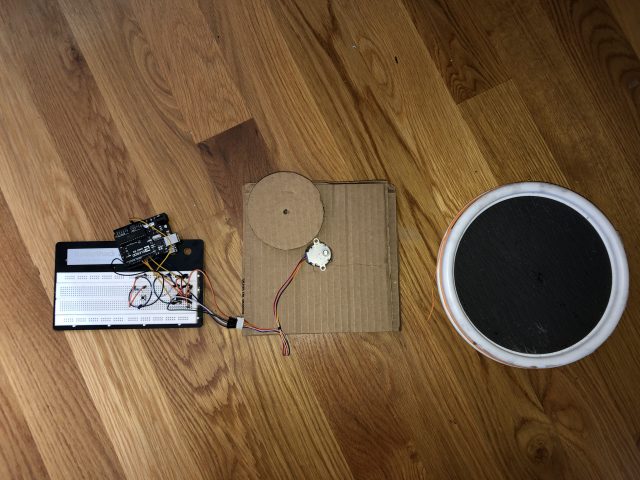
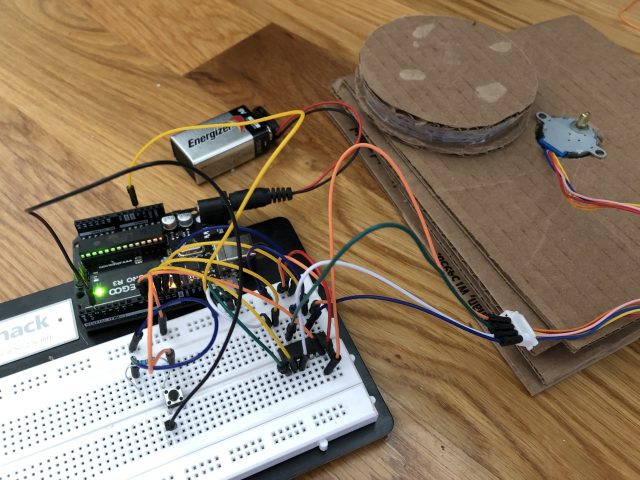
Some images of the Arduino machine.
As I have repeatedly discussed with classmates and Nica, I would like to use the rest of the time in ExCap to explore slit scanning. I have already experimented with the technique, as seen in one of my previous posts. Since I cannot work with Julie, though, I plan to make this into a project about myself and my thoughts during quarantine. I think I will end up with a series of self portraits, via compositions of objects and ideas important to me, and perhaps parts of my body. I will continue to experiment with the limits of the technique and my capture apparatus, and I’ll share the best results.
I do have a few specific goals:

A gross image from one of my friend’s childhood flip phone, upsized and brightened
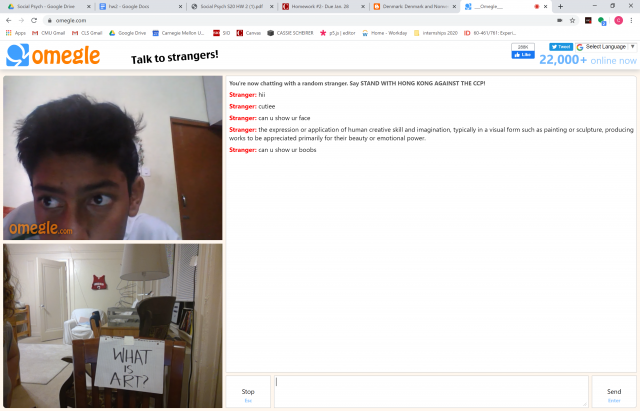
Intro to Contextual Practice project experiment

a pickup line I enjoy
I used 360 Panorama to show you a few rooms in my house:
https://360.io/user/69d8-1067240/cassie-scheirer
I’m familiar with long exposure already, which works best with a DSLR — here’s a few cool photos I’ve taken over the years.
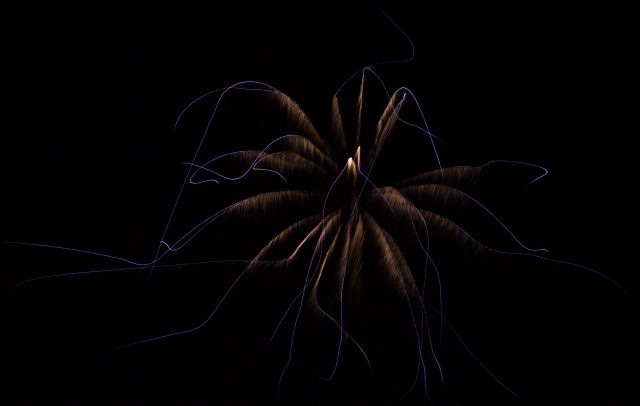
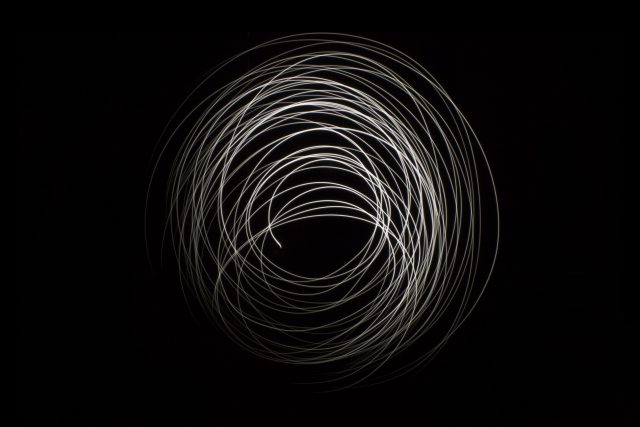
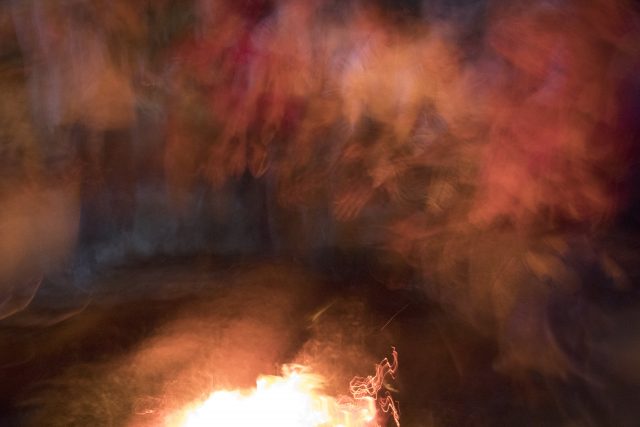
And finally, I tested out Poloska, a slit-scanning app. I’m absolutely in love.
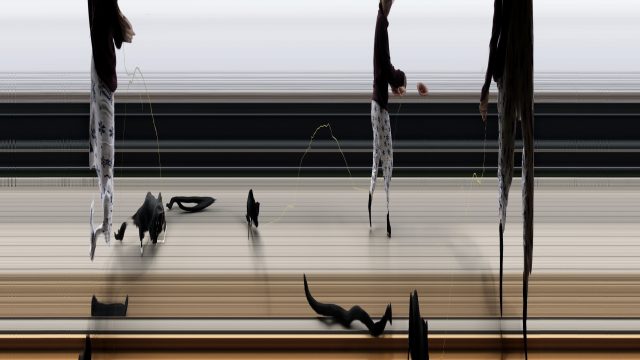
^ me playing with my cat
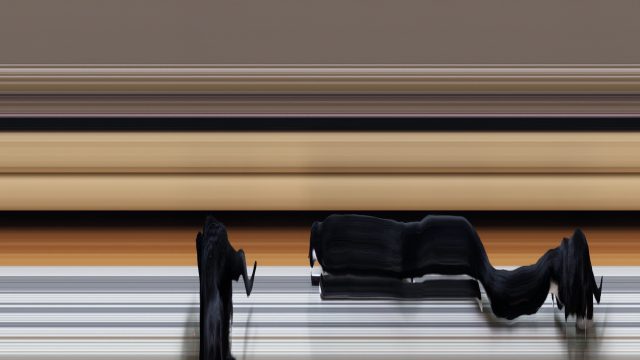
^ my cat
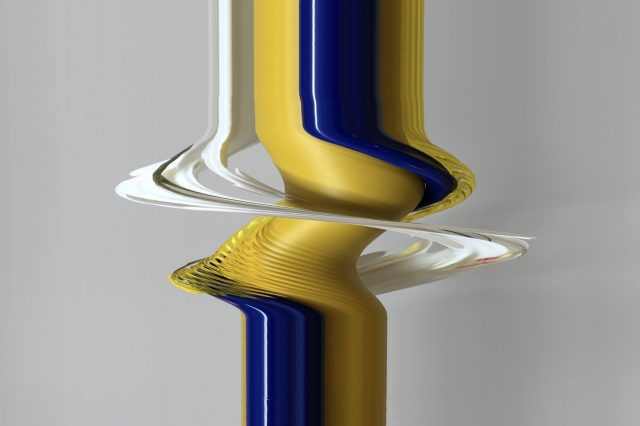
^ bananas, a cat toy, and fake flowers
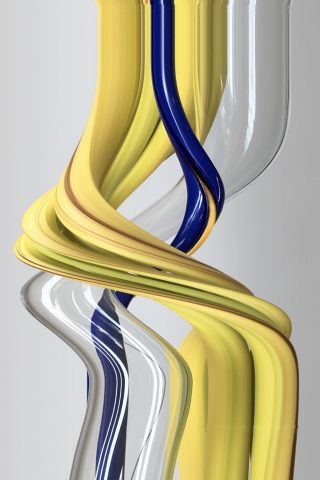
^ bananas, a glass, and a cat toy
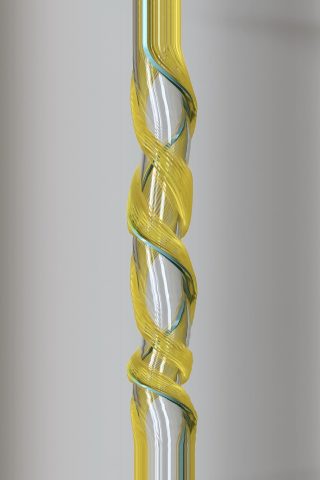
^ a glass, a cat toy, and a pair of tweezers
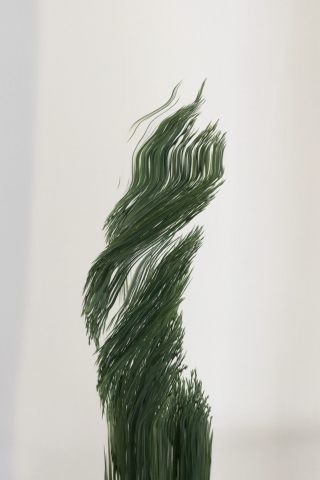
^ a fake bonzai tree
I did a few distortion experiments:
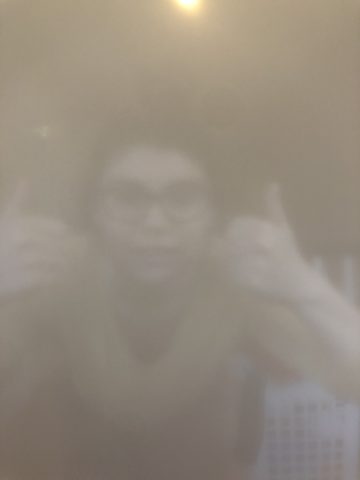
through a piece of toilet paper;

through a mason jar filled with water and stirred;
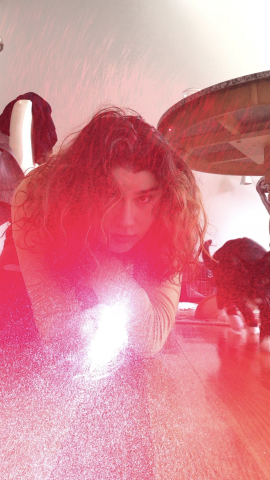
and through the light of a laser pointer (ft. my cat). (Hopefully my iPhone camera sensor isn’t destroyed.)
I have an incredible friend in the costume design program, Julie Scharf, and she is an artwork in herself. She is incredibly dedicated to her vintage clothing collection, the history and practice of performance costume, and queer imagery in the entertainment industry–and since seventh grade, she has not worn the same outfit twice.
Her, as a stylist, and I, as a photographer, and both of us as queer artists, have partnered on an indefinitely-long project of creating a critical photographic anthology of queer costume. This is not nearly a detailed enough description of it, but the idea is still in development and we don’t want to reveal too much about it yet.
However, for about a month now, I have been photographing Julie’s outfits and her accompanying performances on many days of the week. Some of my favorites so far:
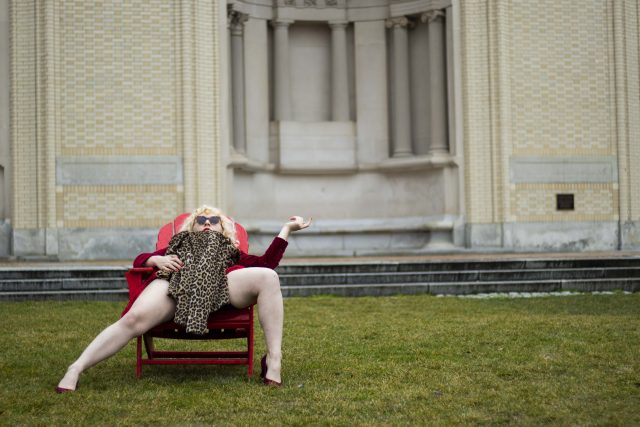

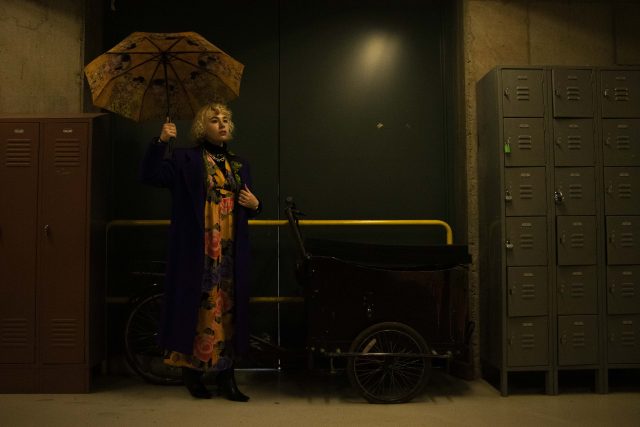
I would like to use the Person In Time project to create a work that would contribute to this larger project. The relevant “time” component here is that we are documenting Julie over time, which is in itself based on the historical timelines of costume, queerness, and performance. Julie and I are interested in expressing our ideas non-traditionally (media more queer than photography), so ExCap provides a perfect opportunity to start.
First, I would be most excited to computationally create my own slit-scan camera and take strange images of Julie and her outfits with it. This was inspired by Golan’s description of my last project as slit-scanned spaciotemporal sculptures. I wasn’t exactly sure what he meant by “slit-scanned”, so I looked it up and I am absolutely obsessed with it. Slit-scanning is essentially a long-exposure photography technique, except instead of layering entire frames taken over time on top of each other, mere slits of the frame are captured and stitched chronologically left to right. This is the photography of time, not space. The images below are just a few of the incredibly beautiful applications of this technique.

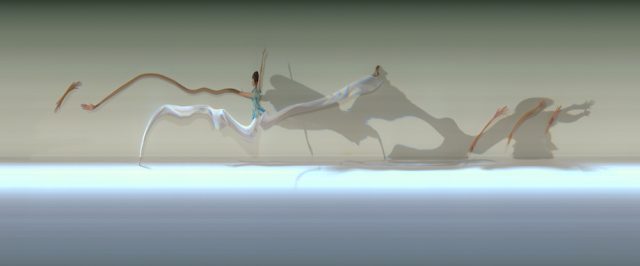
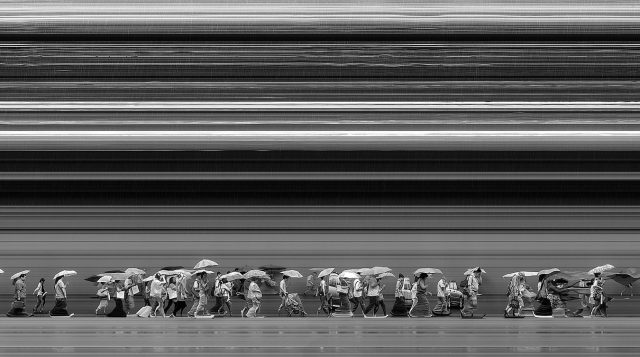
Since I’d be making the camera myself, I see the potential for a lot of experiments as well: I could order the slits left to right, as is normally done, but I could also go right to left, up and down, and randomly, to name a few.
My second idea is to create a video like Kylie Minogue’s Come Into My World. I don’t know how I’d be able to do this easily without the precision of the robot arm, so I guess I’d program the robot arm to film videos of Julie doing different performances in an exact circle and layer them on top of each other.
Finally, I also think it would be interesting to document Julie’s outfits with photogrammetry instead of regular photography, perhaps suspending them from the ceiling with string (which I could remove in post-production) to get 3D versions of this:
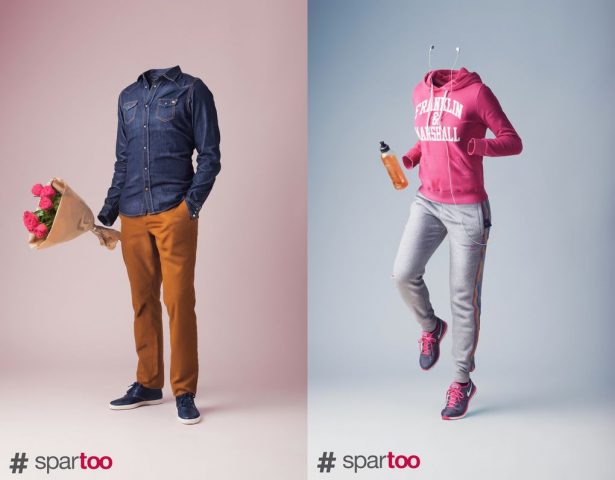
For my typology, I objectified “I love you”.
I created 3D sculptures out of the shape that one’s mouth makes over time as they speak the words “I love you” in their first language.
As I’ve watched myself fully commit to art over the last few months, I’ve realized that my practice—and, really, my purpose as a human—is about connecting people. I love people. I love their feelings and their passions, listening to their stories, working together, and making memories. I love love. I want people to experience the exhilaration, sadness, anger, jealousy, and every single powerful emotion that stems from love and empathy.
Having this realization was quite refreshing, as for the last year and I half I have been debating over various BXA programs, majors, minors, and labels. But no longer–I am proudly a creator, and I want to create for people.
Therefore, this project represents both my introduction to the art world as a confident and driven artist and a symbol of my appreciation for those who have helped me get to this point in my life. The people I love are the reason I live, so I wanted to create something that allowed other people to express that same feeling.
My typology machine is quite obnoxious, and the journey I took to figure it out was long.
First, I tested everything on myself.
I recorded myself saying “I love you”.
I originally wanted to do everything with a script based on FaceOSC. I wrote such a script, which took a path to a video file and extracted and saved an image of the shape of the lips and the space inside the lips for every frame.

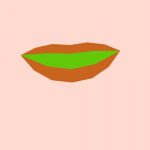
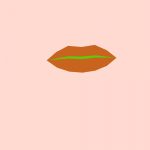
My fear for this method was true: I felt there were not enough keypoints around the lips to provide distinct enough lip-shape intricacies from person to person. Plus FaceOSC is not perfect, so some of the frames had glitched and produced incorrect lip-shapes. This would not do when it came to stitching everything into a 3D model. From here I decided to do it all manually.
Most of these “I love you” videos broke down into about 40 frames, and if not I used every other frame to trim it down.
I opened every single frame of each video in Illustrator, traced the inside of the mouth with the pen tool, and saved all the shapes as DXF files.
I did this on my own mouth first, but here is Pol’s. At this point I wasn’t sure whether I would be laser cutting or 3D printing for the final product, but I knew laser cutting would be the fastest way to create a prototype, so I compiled all the shapes of my mouth onto one DXF and laser cut them all in cardboard.
I thought the stacking method would be cool, but it was not. I did not like the way this looked. At this point I buckled down and prepared myself for the time required to 3D print.
To do this, I manually stacked all the lip-shapes in Blender and stitched them together to create a model.
With the first two models I made, I printed them at a very small scale (20mm).
I was definitely happier, but they needed to be bigger.
Finally, I printed them at the size they are at now, which took 12 hours. One incredibly frustrating thing I did not document was the fact that the scaffolding accidentally melded to the actual model, so I spent an hour ripping off the plastic with pliers and sanding everything down. And for the finishing touch I spray painted them black, and attached them to little stands.
Cassie (English)
Policarpo (Spanish)
Ilona (Lithuanian)
One of the most interesting aspects of this project is that it exemplifies the idiosyncrasies of the ways we communicate. As you can see, some people’s mouths are long and some are short; some enunciate a lot while others don’t; some talk symmetrically while others don’t. So not only are the sculptures physical representations of a mental infatuation, love, but they almost become portraits of the people from which they came. This is a look into the tendencies of the owner–the emotions they feel, the lies they tell, the passion with which they speak, the culture from which they come all influence the shape of their mouths. These sculptures tell the unique story about a person and their connection with the recipient of their “I love you”. As a result, no two sculptures can be the same.
Unfortunately, the manual nature of this process, plus waiting for the 3D printing, allowed me to create only 3 sculptures for the deadline. However, I am definitely not finished with this project.
For my project, I want to record people’s mouths saying something to a person they love and make sculptures out of the change in shape of their lips. I will do this by tracing the lips of every frame of a video (or burst of photos), which will vary widely depending on what people say, the shape of the lips, and what language they speak, and then stacking those shapes on top of each other somehow to create a three-dimensional shape.

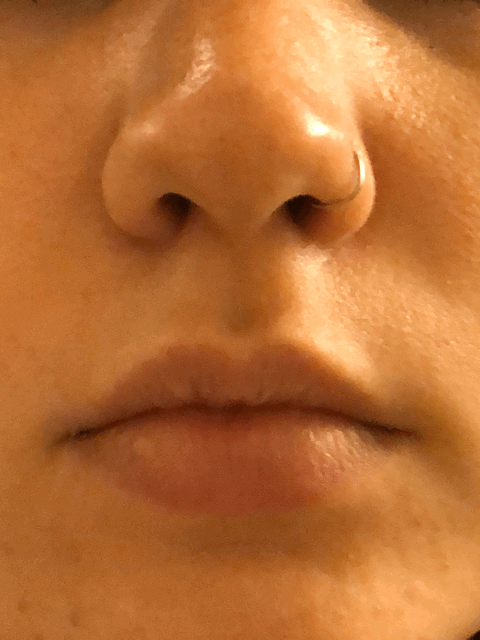
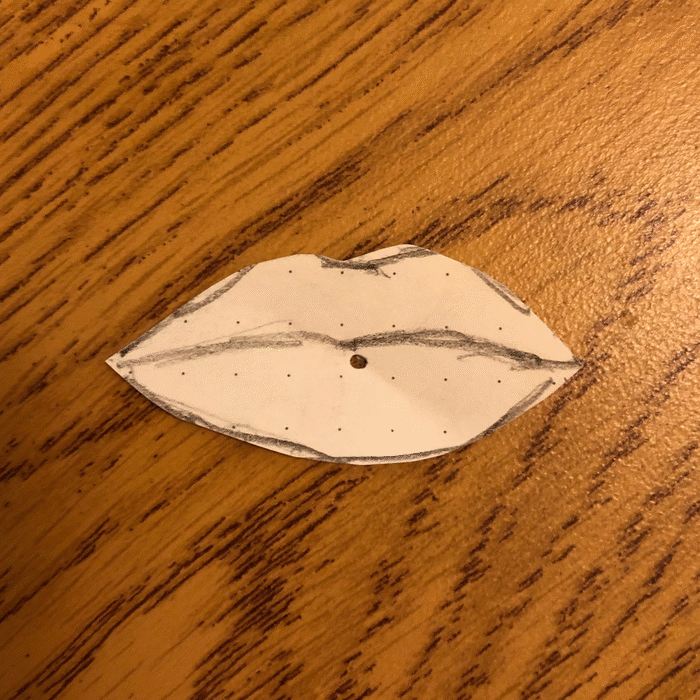
(I skipped some frames when sketching.)

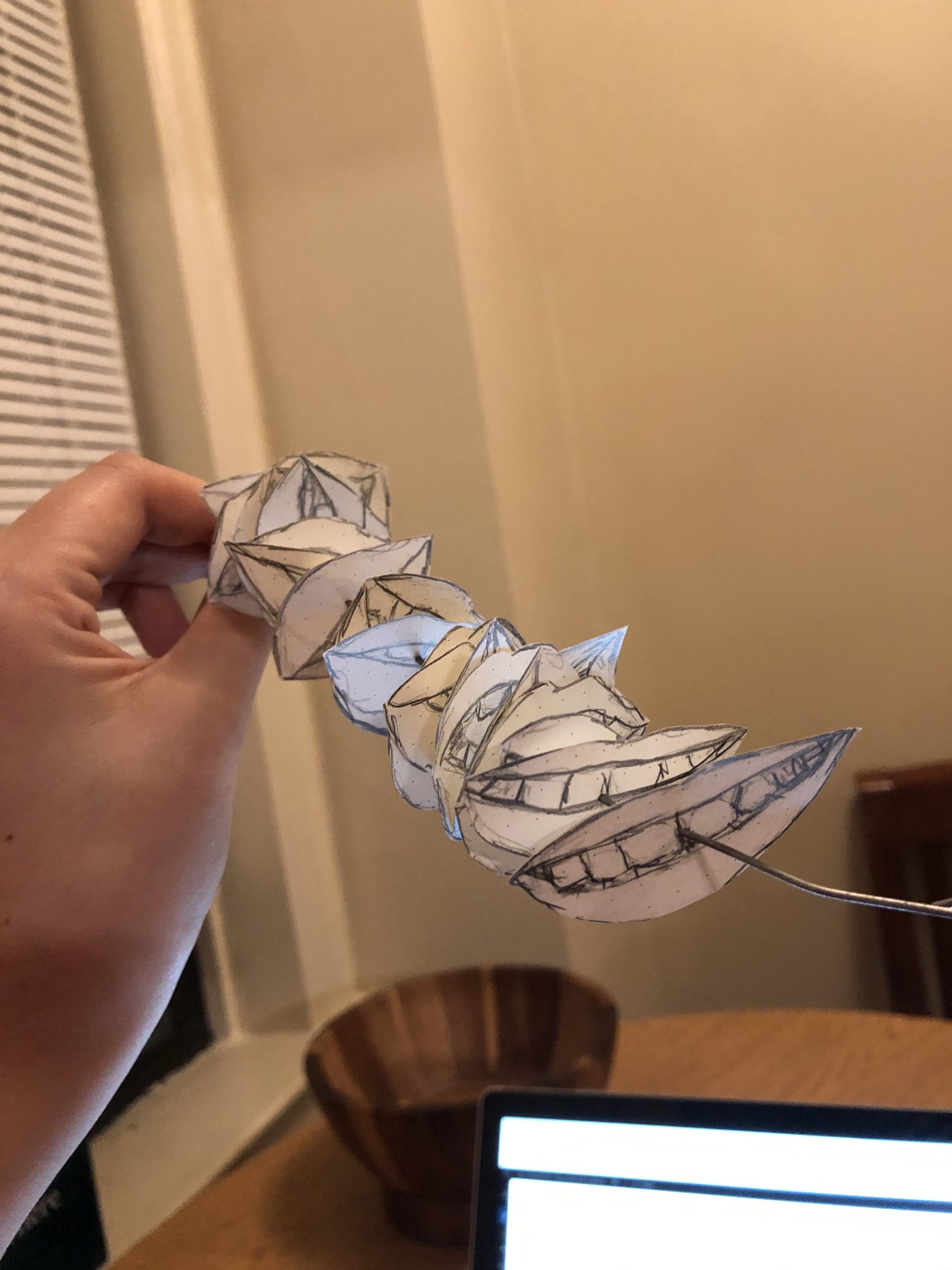

(I would not use a material as thin as paper for the final sculpture.)
However, I am still unsure of the degree of automation that I want the machine to work at. I think the following two ideas are equally interesting but incredibly different and could create entirely different meanings behind the final typology.
Very Automatic. I record someone’s lips with the slow motion camera. I write a script in Processing that, when fed the recording, will break the video down into its frames, extract the shape of the lips in each frame with FaceOSC, and export the relative XY coordinates of each frame’s “lip shape” (landmarks) to a text file. I write a Blender script that, when fed the text file of 2D lip shapes, will sequentially layer the shapes along the Z axis, stitch the shapes together, and export an FBX file of the new 3D shape. At this point, I can either send the FBX to a 3D printer and end up with a small, smooth plastic sculpture; or, I continue to slice the model, cut the slices on the laser cutter, and end up with a sculpture like the photo below. Once I finish the scripts, I could easily make as many sculptures as I wanted (as time permits), at any size ranging from finger to forearm-size (relatively small).

Not Automatic. I stay as far away from technology as possible. I use a film camera void of a computer to take a burst of photos of lips speaking.
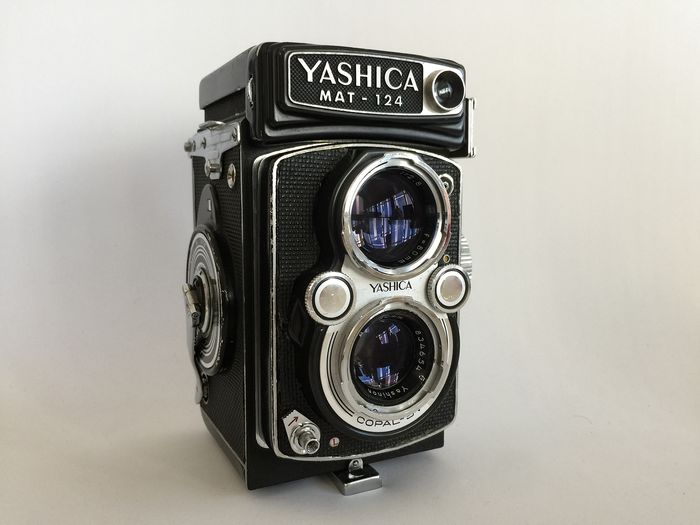
I develop the negatives in the darkroom and create large-ish prints on the enlarger (11 x 17 maybe?). I trace the shape of the lips in each photo with wire. I construct some sort of 3D body out of the layers of wire lips with more wire, metal, or some malleable but formidable “skeleton” material (chicken wire-esque). I cover it in paper mache.

(Not sure if this is Photoshopped or actual paper mache but this is essentially what I would do.)
Finally I paint it and glaze it. These could get really big, probably a couple feet tall, depending on how much the person says in the video. This technique is way more physically laborious than the first, so I don’t know if I could make more than three or four before the deadline.
I have a few other ideas of differing degrees of automation, but these are the two that I am super excited by. So much so that I really want to do both of them and need help deciding which (if either) works best for this project/this class.
Alternatively, while this would be a shit ton of work, my typology could instead be the differing degrees of automation on one set of lips (mine, saying my own sentence about someone I love). This typology would consist of similar 3D sculptures with the same set of lip shape data, but made with different sculpture materials; while the aforementioned typology would be sculptures of the same material, but of different lips, languages, and loves.
Please help me decide!